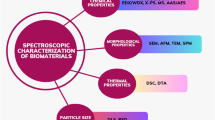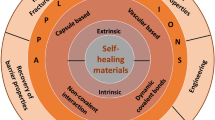Abstract
Pulsed electric field (PEF) treatment was examined as a potential decontamination method for tissue engineering biomatrices by determining the susceptibility of a range of microorganisms whilst within a collagen gel. High intensity pulsed electric fields were applied to collagen gel biomatrices containing either Escherichia coli, Pseudomonas aeruginosa, Staphylococcus epidermidis, Candida albicans, Saccharomyces cerevisiae or the spores of Aspergillus niger. The results established varying degrees of microbial PEF susceptibility. When high initial cell densities (106–107 CFU ml−1) were PEF treated with 100 pulses at 45 kV cm−1, the greatest log reduction was achieved with S. cerevisiae (~6.5 log10 CFU ml−1) and the lowest reduction achieved with S. epidermidis (~0.5 log10 CFU ml−1). The results demonstrate that inactivation is influenced by the intrinsic properties of the microorganism treated. Further investigations are required to optimise the microbial inactivation kinetics associated with PEF treatment of collagen gel biomatrices.







Similar content being viewed by others
References
Drury JL, Mooney DJ. Hydrogels for tissue engineering: scaffold design variables and applications. Biomaterials. 2003;24(24):4337–51.
Sachlos E, Czernuszka JT. Making tissue engineering scaffolds work. Review: the application of solid freeform fabrication technology to the production of tissue engineering scaffolds. Eur Cell Mater. 2003;5:29–40.
Kwakman PHS, Te Velde AA, Vandenbroucke-Grauls CMJE, Van Deventer SJH, Zaat SAJ. Treatment and prevention of Staphylococcus epidermidis experimental biomaterial-associated infection by bactericidal peptide 2. Antimicrob Agents Chemother. 2006;50(12):3977–83.
Boelens JJ, Dankert J, Murk JL, Weening JJ, van der Poll T, Dingemans KP, et al. Biomaterial-associated persistence of Staphylococcus epidermidis in pericatheter macrophages. J Infect Dis. 2000;181(4):1337–49.
Madigan MT, Martinko JM, Brock TD. Brock biology of microorganisms. Upper Saddle River: Pearson Prentice Hall; 2006.
Donlan RM. Biofilms and device-associated infections. Emerg Infect Dis. 2001;7(2):277–81.
Von Eiff C, Jansen B, Kohnen W, Becker K. Infections associated with medical devices: pathogenesis, management and prophylaxis. Drugs. 2005;65(2):179–214.
Kuijer R, Jansen EJP, Emans PJ, Bulstra SK, Riesle J, Pieper J, et al. Assessing infection risk in implanted tissue-engineered devices. Biomaterials. 2007;28(34):5148–54.
Gorham SD, Srivastava S, French DA, Scott R. The effect of gamma-ray and ethylene oxide sterilization on collagen-based wound-repair materials. J Mater Sci Mater Med. 1993;4(1):40–9.
Griffiths S, Smith S, MacGregor SJ, Anderson JG, Walle Cvd, Beveridge JR, et al. Pulsed electric field treatment as a potential method for microbial inactivation in scaffold materials for tissue engineering: the inactivation of bacteria in collagen gel. J Appl Microbiol. 2008;105(4):963–9.
Chevallay B, Abdul-Malak N, Herbage D. Mouse fibroblasts in long-term culture within collagen three-dimensional scaffolds: influence of crosslinking with diphenylphosphorylazide on matrix reorganization, growth, and biosynthetic and proteolytic activities. J Biomed Mater Res. 2000;49(4):448–59.
Yunoki S, Ikoma T, Monkawa A, Ohta K, Tanaka J, Sotome S, et al. Influence of gamma irradiation on the mechanical strength and in vitro biodegradation of porous hydroxyapatite/collagen composite. J Am Ceram Soc. 2006;89:2977–9.
Cheung DT, Perelman N, Tong D, Nimni ME. The effect of gamma-irradiation on collagen molecules, isolated alpha-chains, and crosslinked native fibers. J Biomed Mater Res. 1990;24(5):581–9.
Smith S, Griffiths S, Macgregor S, Beveridge J, Anderson J, van der Walle C, et al. Pulsed electric field as a potential new method for microbial inactivation in scaffold materials for tissue engineering: the effect on collagen as a scaffold. J Biomed Mater Res A. 2008;90(3):844–51.
Manas P, Barsotti L, Cheftel JC. Microbial inactivation by pulsed electric fields in a batch treatment chamber: effects of some electrical parameters and food constituents. Innov Food Sci Emerg Technol. 2001;2(4):239–49.
Ravishankar S, Fleischman GJ, Balasubramaniam VM. The inactivation of Escherichia coli O157:H7 during pulsed electric field (PEF) treatment in a static chamber. Food Microbiol. 2002;19(4):351–61.
Yaqub S, Anderson JG, MacGregor SJ, Rowan NJ. Use of a fluorescent viability stain to assess lethal and sublethal injury in food-borne bacteria exposed to high-intensity pulsed electric fields. Lett Appl Microbiol. 2004;39:246–51.
Donsi G, Ferrari G, Pataro G. Inactivation kinetics of Saccharomyces cerevisiae by pulsed electric fields in a batch treatment chamber: the effect of electric field unevenness and initial cell concentration. J Food Eng. 2007;78(3):784–92.
Barbosa-Canovas GV, Gongora-Nieto MM, Pothakamury UR, Swanson BG. Preservation of foods with pulsed electric fields. London: Academic Press; 1999.
Elsdale T, Bard J. Collagen substrata for studies on cell behavior. J Cell Biol. 1972;54(3):626–37.
Beveridge JR, MacGregor SJ, Anderson JG, Fouracre RA. The influence of pulse duration on the inactivation of bacteria using monopolar and bipolar profile pulsed electric fields. IEEE Trans Plasma Sci. 2005;33(4):1287–93.
Songnuan W, Kirawanich P. High-intensity nanosecond pulsed electric field effects on early physiological development in Arabidopsis thaliana. World Acad Sci Eng Technol. 2011;77:208–12.
Chen M-T, Jiang C, Vernier PT, Wu Y-H, Gundersen MA. Two-dimensional nanosecond electric field mapping based on cell electropermeabilization. PMC Biophys. 2009;2(1):9.
Food and Drug Administration US. Kinetics of microbial inactivation for alternative food processing technologies. 2009. http://www.fda.gov/Food/ScienceResearch/ResearchAreas/SafePracticesforFoodProcesses/ucm101662.htm. Accessed 22 Dec 2011.
Aronsson K, Lindgren M, Johansson BR, Rönner U. Inactivation of microorganisms using pulsed electric fields: the influence of process parameters on Escherichia coli, Listeria innocua, Leuconostoc mesenteroides and Saccharomyces cerevisiae. Innov Food Sci Emerg Technol. 2001;2(1):41–54.
Mazurek B, Lubicki P, Staroniewicz Z. Effect of short HV pulses on bacteria and fungi. IEEE Trans Dielectr Electr Insul. 1995;2(3):418–25.
Pothakamury UR, Monsalve-Gonzàlez A, Barbosa-Cánovas GV, Swanson BG. Inactivation of Escherichia coli and Staphylococcus aureus in model foods by pulsed electric field technology. Food Res Int. 1995;28(2):167–71.
Espino-Cortes F, El-Hag AH, Adedayo O, Jayaram S, Anderson W. Water processing by high intensity pulsed electric fields. IEEE Annual Report Conference on Electrical Insulation and Dielectric Phenomena, Missouri, USA. 2006:684–7.
Raso J, Heinz V. Pulsed electric fields technology for the food industry: fundamentals and applications. New York: Springer; 2006.
Yang L, Li H, Wang K, Tan W, Yang W, Zheng J. Atomic force microscopy study of the effect of pulsed electric field on Staphylococcus epidermidis. Anal Chem. 2008;80(16):6222–7.
MacGregor SJ, Farish O, Fouracre R, Rowan NJ, Anderson JG. Inactivation of pathogenic and spoilage microorganisms in a test liquid using pulsed electric fields. IEEE Trans Plasma Sci. 2000;28(1):144–9.
Hülsheger H, Potel J, Niemann EG. Electric field effects on bacteria and yeast cells. Radiat Environ Biophys. 1983;22(2):149–62.
Zhang Q, Chang FJ, Barbosa-Cánovas GV, Swanson BG. Inactivation of microorganisms in a semisolid model food using high voltage pulsed electric fields. Lebensmittel-Wissenschaft und-Technologie. 1994;27:538–43.
Grahl T, Märkl H. Killing of microorganisms by pulsed electric fields. Appl Microbiol Biotechnol. 1996;45(1):148–57.
Fiedurek J. Influence of a pulsed electric field on the spores and oxygen consumption of Aspergillus niger and its citric acid production. Acta Biotechnologica. 1999;19(2):179–86.
Sun D-W. Emerging technologies for food processing. London: Academic Press; 2005.
Friess W, Schlapp M. Sterilization of gentamicin containing collagen/PLGA microparticle composites. Eur J Pharm Biopharm. 2006;63:176–87.
Shimeld LA, Rodgers AT. Essentials of diagnostic microbiology. Albany: Delmar; 1999.
Mcdonnell GE. Antisepsis, disinfection, and sterilization: types, action, and resistance. Washington, DC: ASM Press; 2007.
Nather A, Yusof N, Hilmy N. Radiation in tissue banking: basic science and clinical applications of irradiated tissue allografts. Hackensack: World Scientific; 2007.
Acknowledgments
SG was supported by an EPSRC studentship. We thank David Currie and Catherine Henderson for their excellent technical assistance.
Author information
Authors and Affiliations
Corresponding author
Rights and permissions
About this article
Cite this article
Griffiths, S., Maclean, M., Anderson, J.G. et al. Inactivation of microorganisms within collagen gel biomatrices using pulsed electric field treatment. J Mater Sci: Mater Med 23, 507–515 (2012). https://doi.org/10.1007/s10856-011-4526-x
Received:
Accepted:
Published:
Issue Date:
DOI: https://doi.org/10.1007/s10856-011-4526-x




